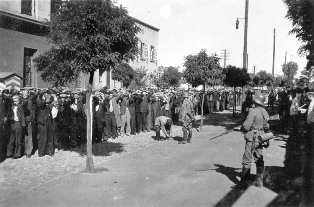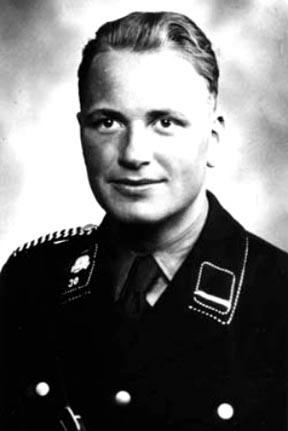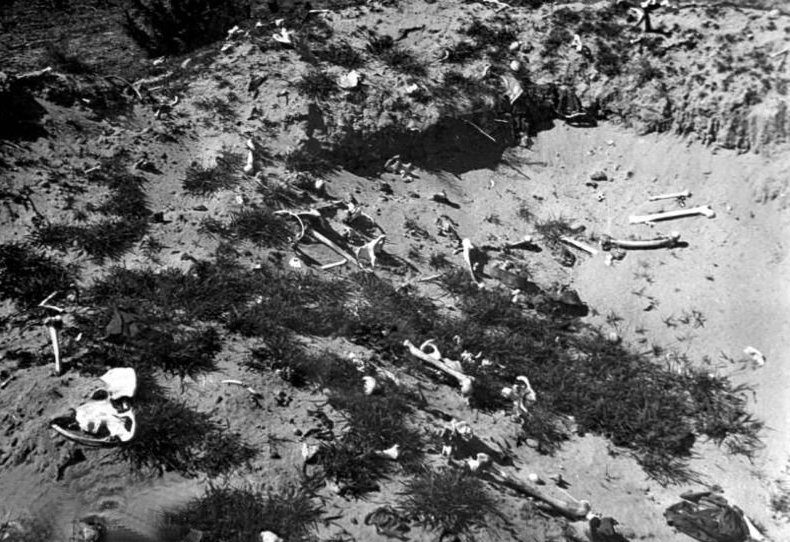Holocaust Education & Archive Research Team |
|
Survivor Stories
Holocaust Survivors Chelmno Survivors Righteous Gentiles Holocaust Recalled
| |||
Oscar Strawczynski Treblinka Survivor
Oscar Strawczynski was born in Lodz Poland in 1906, he became a skilled and accomplished tinsmith, which saved his life in the Treblinka death camp and which also made it possible to save the life of his brother Zygmunt.
Strawczynski arrived in Treblinka from Czestochowa on the 5 October 1942, with his wife Anka, and their two children Guta and Abus and his father Yoseph and mother Malke, who all perished shortly after their arrival.
He testified at the Treblinka trial in Dusseldorf in 1964/65 of Kurt Franz, August Miete, Willi Mentz, Arthur Matthes, Otto Horn and others.
Oscar Strawczynski described conditions at the transport yard:
“The yard is full of people. On one side women and small children, and on the other side, kneeling men. In the centre armed SS men and Ukrainians and a group of about forty men with red bands on their sleeves.
These were the Jews from the “red” group. In the jargon of Treblinka they were called the “burial society.” At the head of the group was Jurek, in the past a crude wagon driver from Warsaw for whom the most despicable thing was not despicable at all… dressed elegantly – something which was not a special problem in Treblinka- with a whip in hand, which he frequently used on the Jews.”
Here Oscar Strawczynski described the sorting work he performed in Treblinka, during his testimony:
“The group to which I belonged, consisting of several hundred people, reaches the yard and begins working. On the blankets and tablecloths that are spread on the ground are piled all kinds of articles, from imported material and expensive suits to plain rags.
From the suitcases we remove notions, cosmetics, soaps, matches, medicines. It seems that there is nothing that we do not remove here in quantities- all sorts, from the most expensive tins to the few potatoes that the poor Jews brought with them.
The sorted articles are brought non-stop to the edge of the yard, where they are piled up and up. The suitcases with valuables have a special place; into them are put things made of gold, watches, rings, diamond’s. Wedding rings make up the greatest quantity of valuable articles.
There are also great quantities of foreign exchange, dollar bills and coins, pounds sterling and gold Russian coins. Polish money is gathered into large piles. From time to time some “gold-Jews” come to the yard and take suitcases full of valuables and money to their workshops and leave behind the empty suitcases that they brought with them. These are also filled up within a short time.
The entire yard gives the impression of a market. There is a special place for house-wares and bottles. Among the house-wares there are utensils of the most expensive nickel or aluminium as well as old broken pots.
I work in a group of twenty men. They make us sort packages from the transport from Czechoslovakia. I open a package and find underwear, suits, shoes, notions, and so on.
I am still new at this work so I am not sure what to throw onto the pile of silk clothing, of partially silk clothing, wool, cotton. One must always be in motion; to rest or sit down is prohibited – one could pay for that dearly.”
Strawczynski described the brutal Kurt Franz who toured the camp with his dog Barry by his side:
“He walked through the camp with great pleasure and self-confidence. Barry, his big, curly –haired dog, would lazily drag along behind. Lalka would never leave the place without leaving some memento for somebody. There was always some reason to be found.
And even if there were no reason – it made no difference. He was expert at whipping, twenty-five or fifty lashes. He did it with pleasure, without hurrying. He had his own technique for raising the whip and striking it down.
To practice boxing, he would use the heads of Jews, and naturally there was no scarcity of those around. He would grab his victim’s lapel and strike with the other hand. The victim would have to hold his head straight so that Franz could aim well. And indeed he did this expertly. The sight of the Jew’s head after a “training session,” of this sort is not difficult to imagine.
Once Lalka was strolling along the platform with a double- barrelled shotgun in his hand and Barry in his wake. He discovered a Jew in front of him, a neighbour of mine from Czestochowa, by the name of Steiner.
Without a second thought, he aimed the gun at the man’s buttocks and fired. Steiner fell amidst cries of pain. Lalka laughed. He approached him, commanded him to get up, pull down his pants, and then glanced at the wound.
The Jew was beside himself with pain. His buttocks were oozing blood from the gashes caused by the lead bullets. But Lalka was not satisfied. He waved his hand and said, “Damn it, the balls haven’t been harmed!”
He continued his stroll to look for a new victim.”
Several Jews had managed to escape from Treblinka and the Germans tried a number of ways to persuade the Jews not to make the attempt.
Oscar Strawczynski outlined what the Germans did:
“At first they wanted to persuade us with nice words. An important person from Lublin came to the camp, gathered us together and spoke to us. We were told that a “Jewish city” was being established and that the Jews would be granted full autonomy there, and if we would work with dedication and earn their trust we would receive leadership positions in the Jewish city.
When the nice words did not help, they began to threaten us. They announced that if the escape attempts continued, they would strip us and we would have to work naked, and that attempted escape would be punished by death by torture, because we had violated the trust that had been placed in us.
To demonstrate that these were not idle threats, the next day two young boys were stopped and accused of having planned an escape from the camp. In the centre of the roll-call square, a gallows was built and all the prisoners were gathered around it.
The commander gave a short speech on the punishment of the escapees and the two boys were hung naked by their feet. The Germans whipped their swinging bodies for about half an hour, until one of the Germans pulled a gun and shot them.”
The Jews in the Treblinka death camp knew that the Germans would kill them as soon as they had outlived their usefulness, so an underground movement was established in early 1943, and planning for a revolt in April 1943 was postponed due to the typhus epidemic that gripped the camp. Strawczynski was a member of the underground and he described its initial plans:
“In the first months of winter, while we were a small group in the carpentry shop, Mordechai came up with the idea of resistance and escape. There were Germans who came nearly every evening to the tailor shop to listen to the prisoner’s orchestra’s music, and the idea was that a combat team would ambush these Germans, kill them quietly and take their weapons.
One of the team would then put on a German uniform and call the Ukrainian guards who were near the Jewish barracks, one by one. As they entered the hut they, too would be killed silently.
With the guards eliminated, the prisoners would be summoned to leave their huts and escape from the camp. The plan sounded altogether too fantastic and gained few supporters, but within a short time the idea of revolt had taken root.”
Read about the revolt at Treblinka [here]
Sources:
Belzec, Sobibor, Treblinka by Yitzhak Arad, published by Indiana University Press 1987 Holocaust Historical Society
Copyright 2009 Chris Webb H.E.A.R.T
|



